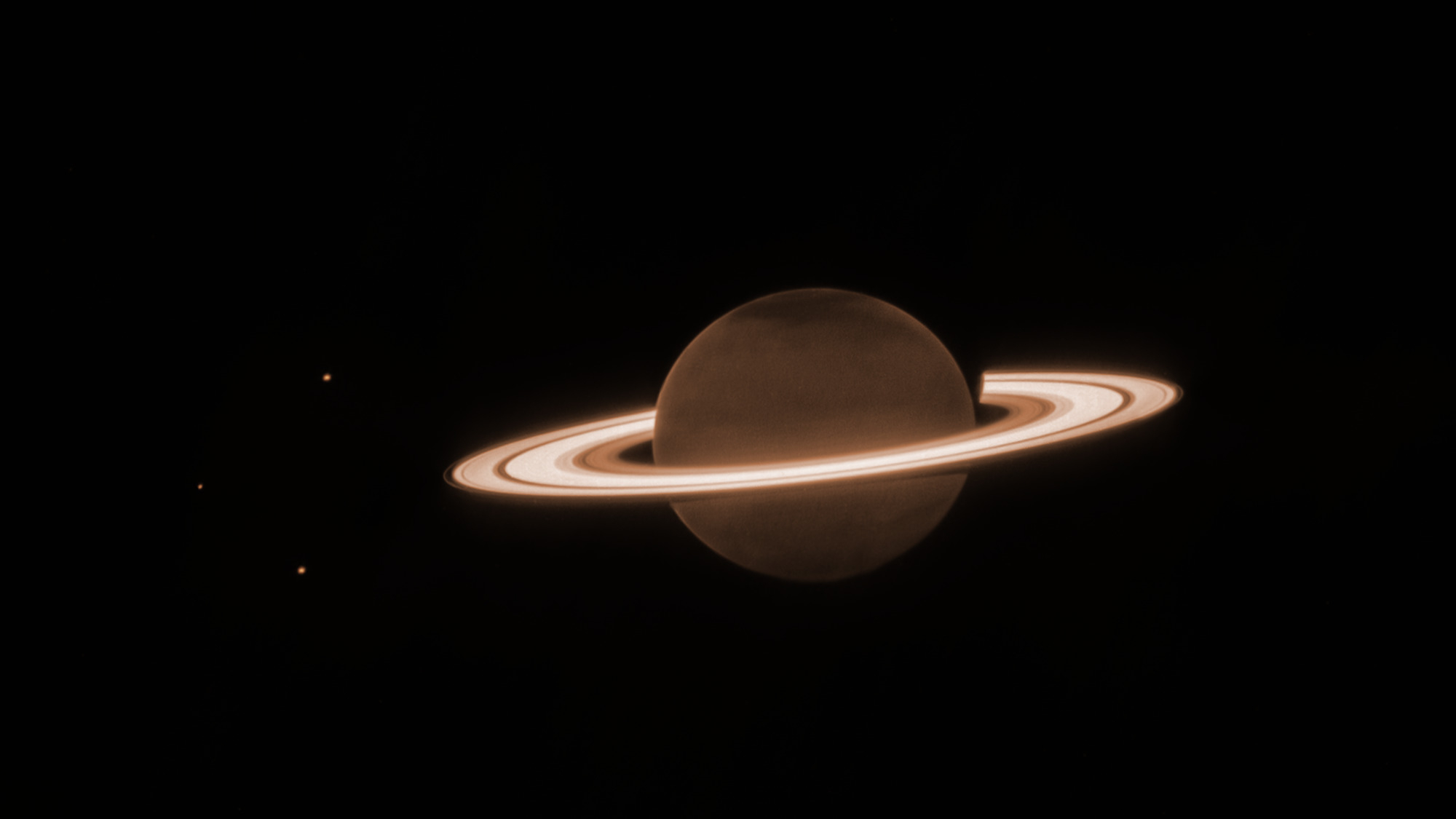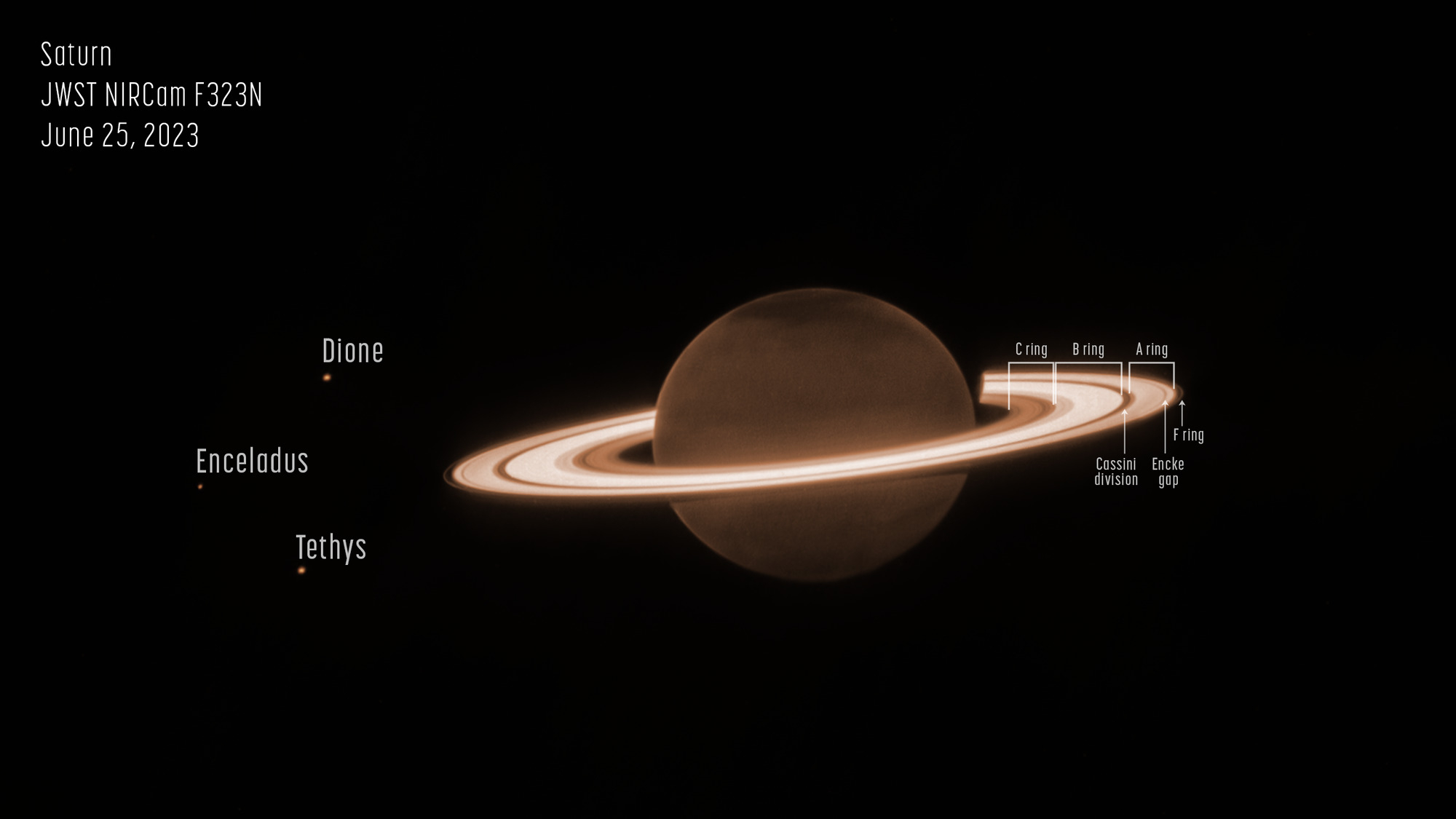
The first official photo of Saturn from the James Webb Space Telescope (JWST) does not disappoint.
On Friday (June 30), NASA released a stunning JWST image that shows the ringed planet in a whole new light. The photo, captured on June 25 by the observatory's NIRCam (Near-Infrared Camera) instrument, "is already fascinating researchers," NASA officials said in an image description.
"Saturn itself appears extremely dark at this infrared wavelength observed by the telescope, as methane gas absorbs almost all of the sunlight falling on the atmosphere," they added. "However, the icy rings stay relatively bright, leading to the unusual appearance of Saturn in the Webb image."
The newly released image was captured during a 20-hour-long JWST Saturn-observing campaign. We got a sneak peak at the results of this campaign a few days ago, via raw JWST photos posted to the unofficial website JWST feed. As the new photo shows, processing makes a world of difference.
Related: Saturn: Everything you need to know about the sixth planet from the sun

While Saturn's rings are the clear star of the new photo, it also highlights Enceladus, Dione and Tethys, three of Saturn's 145 known moons.
Enceladus is of particular interest to astrobiologists, because the satellite is thought to possess an ocean of liquid water beneath its icy shell. The moon blasts some of its subsurface water out into space via geysers near its south pole, dramatic features discovered by NASA's Cassini probe back in 2005 and observed recently by JWST.
JWST was designed to peer into deep time, giving astronomers looks at some of the universe's first stars and galaxies. But, as the new Saturn shot shows, the observatory can eye objects much closer to home as well.
Indeed, the $10 billion telescope has also snapped amazing photos of Uranus and given us great views of Jupiter and its polar auroras. And JWST is just getting started: The observatory launched on Dec. 25, 2021 and began science operations last summer.







